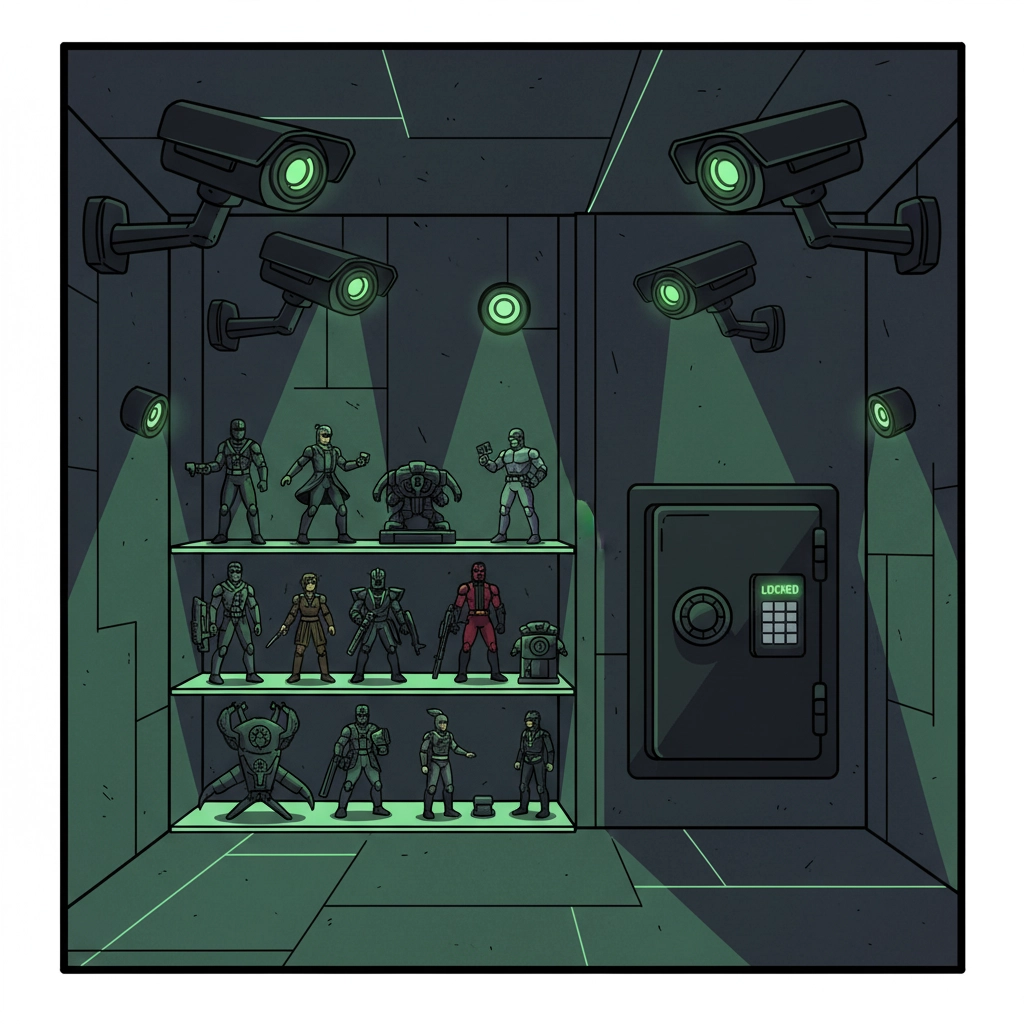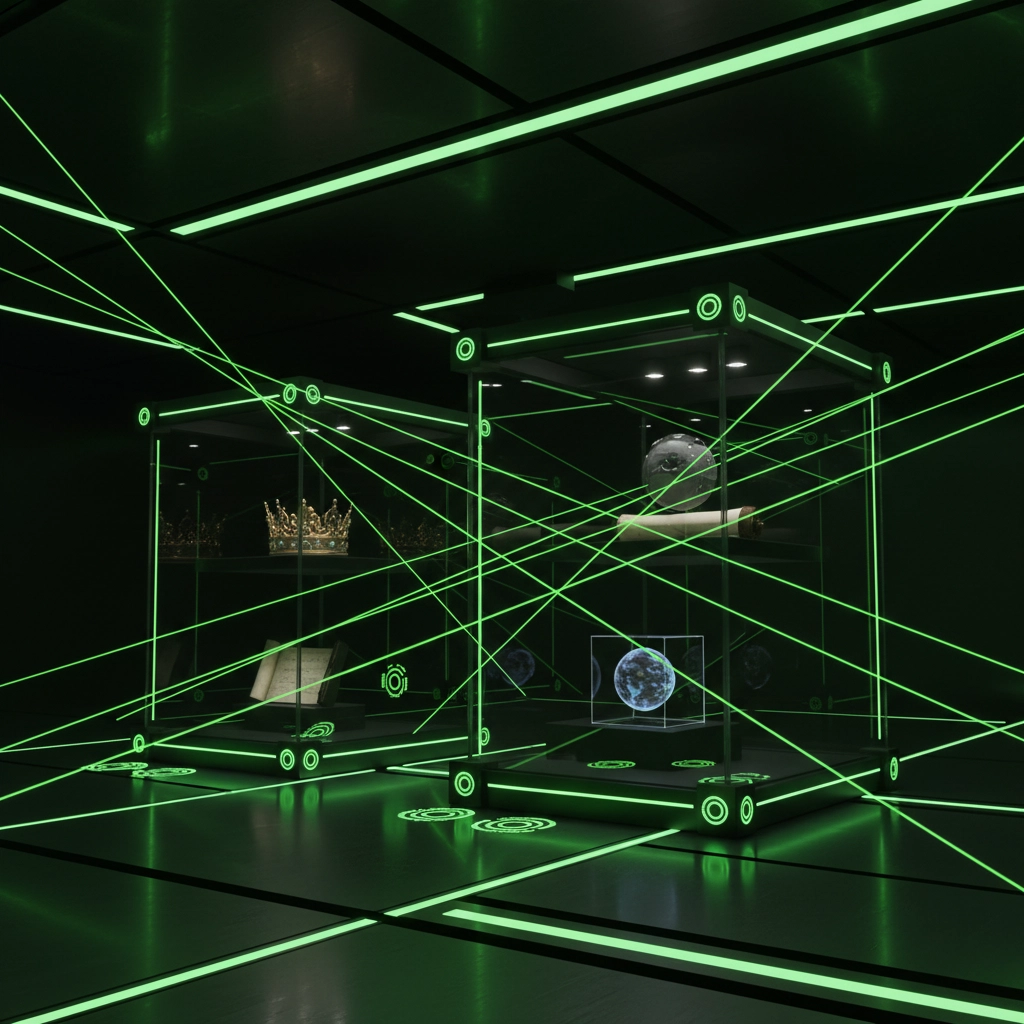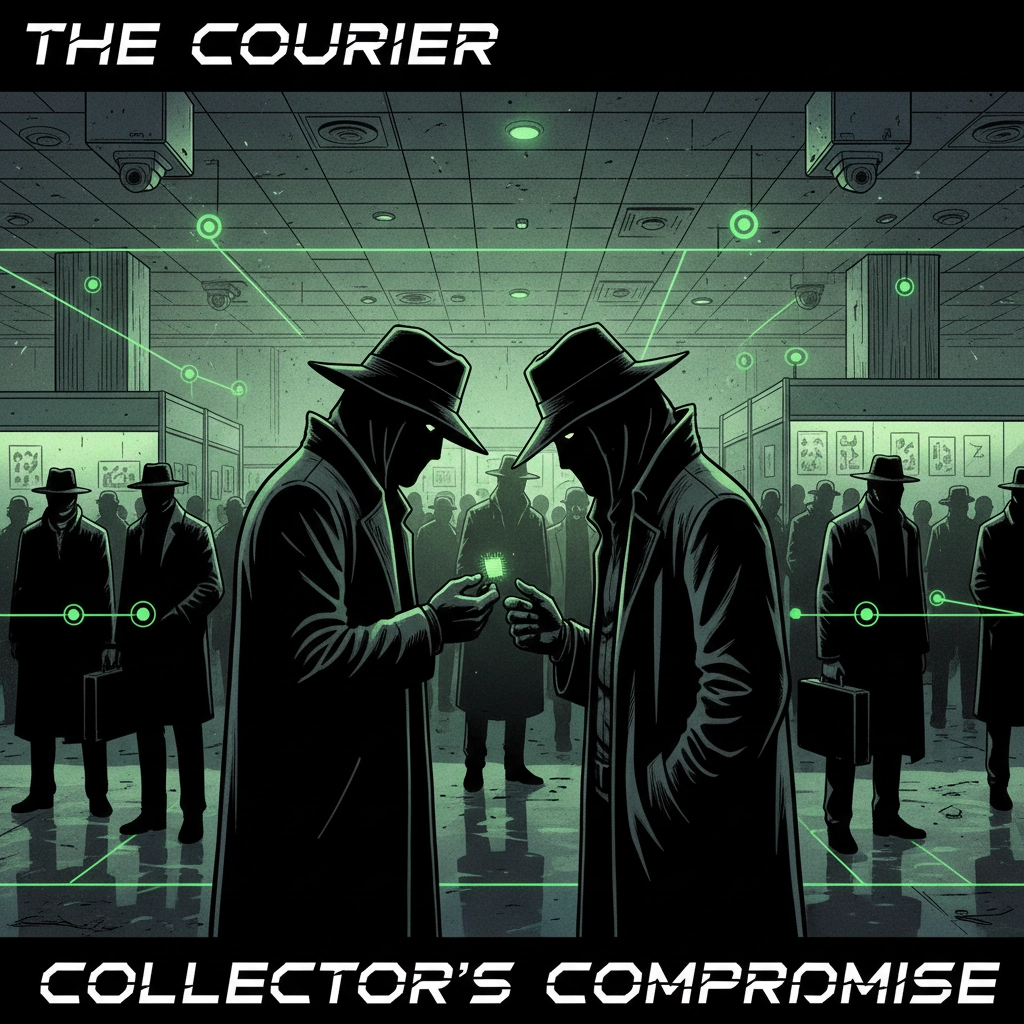Inside the Collectibles Security Arms Race: How Card Shops and Collectors Are Fighting Back Against Crime
- Dr. Mardis

- 3 days ago
- 3 min read
Card shops are targets. Collectors are targets. The response has been predictable.
Property crime rates climb. Police resources shrink. Recovery odds plummet. The collectibles market adapts through escalating security measures.
The Retail Front
Card retailers now treat every customer like a potential thief. Security tags attach to Pokemon booster packs. The same electronic strips used on designer handbags.
Store layouts changed. Card aisles moved near registers. Employees maintain visual contact. Shopping carts positioned to slow movement through aisles.

Glass display cases house higher-value products. Items positioned above eye level behind counters. Physical barriers between merchandise and customers.
Some collectors report feeling unwelcome. The hobby experience degraded by suspicion and surveillance.
The measures work. Grab-and-run thefts decline when barriers increase.
Home Defense Escalation
Private collectors face the access versus security dilemma. Valuable items stored for easy viewing create theft opportunities.
Monitored security systems became standard. Hardware costs range from hundreds to thousands. Monthly monitoring fees between $25 and $75.
Insurance companies offer 15-20% discounts for monitored systems. Average losses drop from $5,343 to $3,266 with security systems installed.
Neighborhood effects exist. Higher system concentrations reduce break-ins for all residents. Even homes without systems benefit.

Physical security layers multiply. Safes. Vaults. Fireproof storage. Climate-controlled facilities. Access restrictions.
Surveillance cameras monitor storage areas. Motion sensors trigger alerts. Asset tracking tags identify specific items.
Advanced Countermeasures
Museum-grade technology enters the hobby space. Vibration sensors attach to individual cards. Anti-touch barriers detect proximity. Wireless sensors monitor movement.
Camera systems with motion detection provide continuous monitoring. Real-time alerts and recorded evidence.
Some collectors adopt invisible security practices. No social media posts showing collections. Valuables kept away from windows. Motion-activated exterior lighting.
Documentation protocols establish proof of ownership. Photographs. Purchase receipts. Appraisal reports. Insurance claim preparation.
The Information Gap
Security knowledge spreads through private channels. Shop owners share countermeasures in closed groups. Collector forums discuss protection methods quietly.
No public resource consolidates best practices. No crowdsourced security database exists. Information remains fragmented across private networks.

Individual solutions develop in isolation. Collectors reinvent security wheels. Shops implement redundant measures without coordination.
The silence benefits criminals. Security gaps remain unaddressed. Community knowledge stays locked away.
Underground Intelligence
Whispered conversations at conventions reveal sophisticated protection strategies. GPS tags hidden in valuable items. Decoy collections positioned to mislead thieves. Panic buttons installed near display cases.
Some shops employ former law enforcement for security consulting. Private investigators track stolen collections. Insurance adjusters share theft pattern data.
Collectors report serial offenders at large events. The same faces appearing at multiple venues. Coordination occurs through private messaging.
Technology Arms Race
Basic alarms escalated to comprehensive systems. Single cameras became multi-angle surveillance networks. Simple locks evolved into biometric access control.
RFID tracking monitors item movement. Smart safes log access times. Mobile apps provide remote monitoring capability.
The progression continues. Each successful theft triggers new countermeasures. Each countermeasure spawns workaround attempts.
Cost escalation follows capability expansion. Simple protection becomes expensive comprehensive systems. Small shops struggle with security budgets.
Community Response Needed
The hobby requires collective security intelligence. Individual solutions provide incomplete protection. Shared knowledge multiplies defensive capability.
Public security resources could transform the landscape. Best practice databases. Threat assessment tools. Community early warning systems.

Armored Cards sits positioned to lead this initiative. Protection expertise meets community need. A platform for security knowledge sharing.
The alternative remains status quo. Private security development. Fragmented countermeasures. Criminals exploiting information gaps.
Current Reality
Collectors adapt or become victims. Shops implement security or close. The arms race continues without coordination.
Property crime statistics show the trajectory. Collectibles represent concentrated portable value. Law enforcement prioritizes violent crime. Recovery rates remain minimal.
The security burden falls on the community. Individual responses provide individual protection. Collective action could shift the entire landscape.
Moving Forward
The security arms race lacks public coordination. Private knowledge sharing limits community protection. A central resource could change this dynamic.
We invite reader input on security experiences. Successful countermeasures deserve wider sharing. Failed approaches warn others away.

Comment below with security strategies. Share protection methods that work. Describe threats encountered. Build collective defensive knowledge.
The hobby's security future depends on community action. Individual protection remains insufficient. Coordinated defense provides the only sustainable solution.
Visit Armored Cards for professional protection solutions. Physical security starts with proper storage and handling equipment.
The arms race continues. Community coordination remains optional. The outcome depends on collective action.
Comments